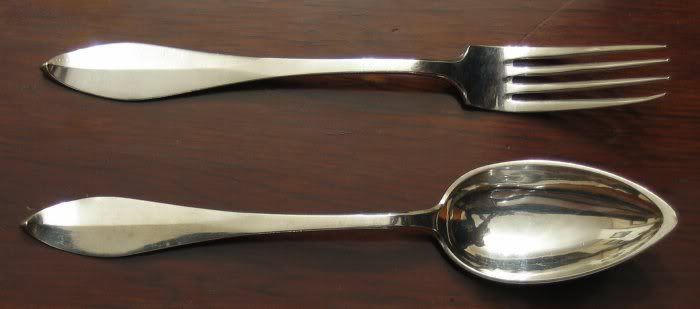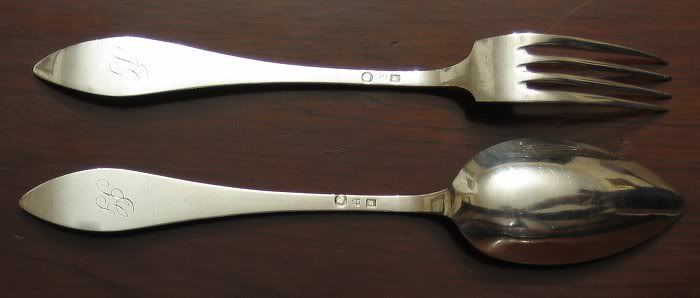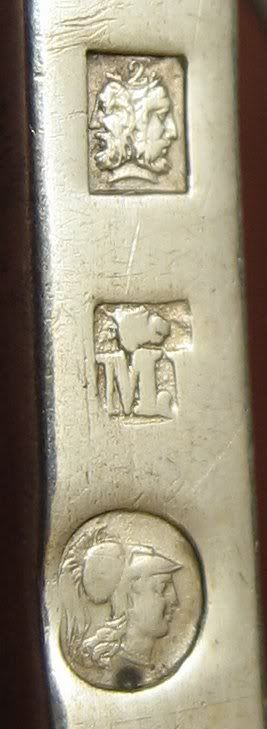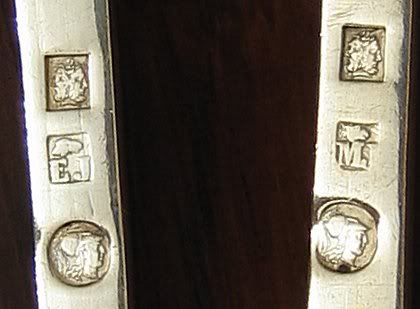
blakstone wrote:Unfortunately, the maker’s mark “MJ” with an animal’s head is not recorded. However the only maker known at the time with these initials was Nicolas Mathieu Jeanne (1784-1848), known as Mathieu Jeanne, and who registered a mark “MI” in a lozenge around 1808, when the region was part of the French Empire. The insignia of his shop at 984 rue Neuvice was “the black (later golden) sheep” [mouton noir (d’or)], and the animal’s head here may well be a sheep’s. If so, this is very likely a later mark used by Jeanne, who was working until at least 1842, or perhaps that of his son Jean Mathieu, a silversmith who worked in his father’s shop along with brothers Jean Etienne (silversmith), Edouard (engraver) and Joseph (jeweler).
Hope this helps!
Ref: Walter Van Dievoet, Geschiedenis En De Officiele Merken Van De Keurkamers Voor De Waarborg Van Goud En Zilver En Belgie Van 1794 Tot Nu (Brussels: Gemeentekrediet van Belgie, 1980), p. 118, mark #5, p. 120, mark #4, & p. 205, table G.
Walter Van Dievoet, Orfèvres de Liège du XIX Siècle (Louvain: Walter Van Dievoet, 2006), p. 59, maker #82

blakstone wrote:Walter Van Dievoet's latest book, Répertoire général des orfèvres et des marques d'orfèvrerie en Belgique, v. II: 1798-1942 (Brussels: Académie d'histoire de l'orfèvrerie en Belgique: 2010) attributes this mark to Emmanuel Joseph Jehu (1750-1808) of Mons (p. 216, mark E1.032), but this is clearly incorrect; it is unlikely Jehu's mark would still be in use in 1832, twenty-four years after his death. (The mark is definitely "EJ", by the way; I have seen very clear examples of it.)
Given the similar Liège provenance and the identical device, I think your guess that the marks in both your posts are linked in a good one. If the maker of the other pieces is Mathieu Jeanne (and I think it is), then "EJ" is assuredly his eldest son Étienne Jeanne, whom Van Dievoet notes took over his father's business after the latter's death in 1848. (Van Dievoet, Orfèvres de Liège, ibid.)
Hope this helps!




